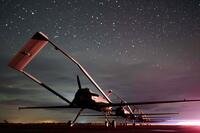The U.S. Navy still plans to receive its most expensive warship in November, but has acknowledged that date "may need to be revised" if additional testing issues surface, a spokeswoman said Monday.
A couple of weeks ago, the service said the new $13 billion Gerald R. Ford aircraft carrier (CVN 78) would be delayed by two months to November due to "first of class" problems, without elaborating. The ship is already two years behind schedule and more than $2 billion over budget.
A Bloomberg News article last week by Tony Capaccio cited a June 28 memo from the Pentagon's top weapons tester, J. Michael Gilmore, to its chief weapons buyer, Frank Kendall, that concluded the ship isn't ready for combat operations because of problems with systems to launch and recover aircraft, defend against aircraft and missiles, and move bombs and munitions.
As a result, the delivery date may slip into 2017, CNN's Zachary Cohen reported on Monday.
In an email to Military.com, Capt. Thurraya S. Kent, a spokeswoman for the Navy, didn't confirm a new timeline but acknowledged the estimated delivery date may change. "The current estimated delivery date is in November 2016," she said. "If additional issues arise during the remaining shipboard testing, that date may need to be revised."
Kent noted the Ford -- a 1,100-foot-long ship being built by Huntington Ingalls Industries Inc. -- is 98 percent complete, the first new aircraft carrier design in four decades and built to operate into the 2060s. The vessel is the first in a $41 billion program to deliver three Ford-class carriers intended to replace the Nimitz-class carriers.
The new Ford-class will feature a similar hull to the Nimitz-class but come with a host of new technologies.
The decision "made many years ago" to incorporate nearly two dozen "developmental systems" -- including the electromagnetic aircraft launch system (EMALS), advanced arrested gear (AAG), dual band radar (DBR), advanced weapons elevator (AWE) and a reactor plans propulsion system -- has "compounded the inherent challenges of a first in class design," Kent said.
"Steady progress is being made to retire technical issues," she added. "EMALS testing was successfully completed in May 2016 and testing of DBR and AAG are projected to complete in time to support upcoming sea trials and first aircraft operations scheduled for early next year."
The Ford is expected to begin deployments in 2021.
Sen. John McCain, a Republican from Arizona and chairman of the Senate Armed Services Committee, has repeatedly criticized the acquisition program for its cost overruns and schedule delays.
The postponed delivery to November "further demonstrates that key systems still have not demonstrated expected performance," he said in a recent statement. "The advanced arresting gear [AAG] cannot recover airplanes. Advanced weapons elevators cannot lift munitions. The dual-band radar cannot integrate two radar bands. Even if everything goes according to the Navy's plan, CVN-78 will be delivered with multiple systems unproven."
Kent defended the effort, saying the new carriers will offer "unparalleled advances in operational availability, flexibility to accommodate high power/energy warfighting advances, higher aircraft launch and recovery rate, reduced manning, and improved survivability to match projected threats -- all at a $4 billion reduction per ship in total ownership cost as compared to the Nimitz-class."









